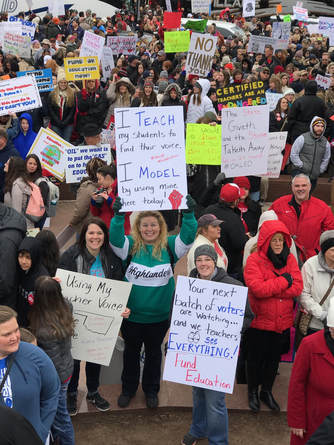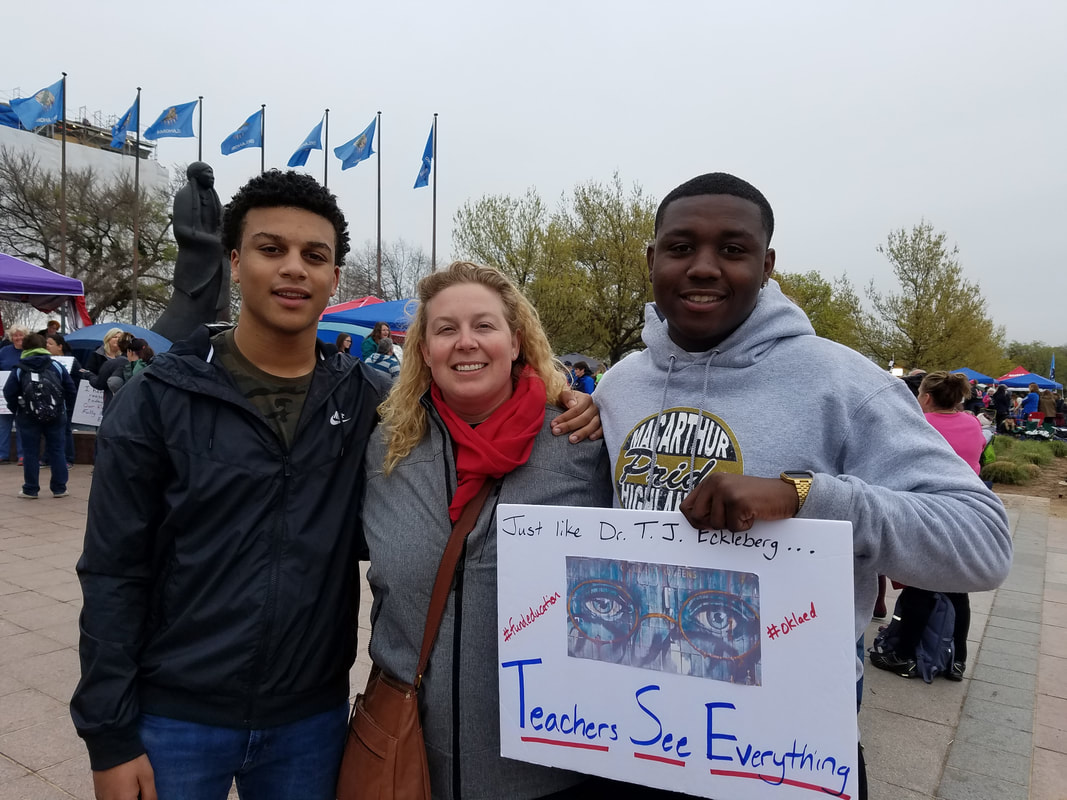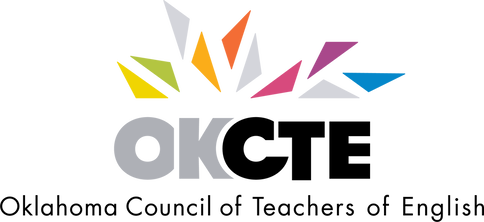|
by Jennie Hanna
Looking back on the past 5 days of work stoppage, which is was we have labeled the “Great Teacher Walkout of 2018,” where “no work” was supposed to be occurring, I find I am more tired than at the end of the first week of the new year. The past week spent at the Oklahoma State Capitol fighting for education funding, fighting for respect for this profession, and fighting for the future of the children in our classrooms has been one of the most fulfilling and draining experiences of my career.
As a high school American Literature teacher, every year I get 150 or more new Juniors to teach. We spend the year looking at great works from Arthur Miller, JD Salinger, Lorraine Hansberry and many others, yet my favorite lesson always comes in the spring. As we move into the Post-Modernism literary period, I frame the reading of President John F. Kennedy's 1961 Inaugural Speech and Dr. Martin Luther King Jr. 1963 “Letter from Birmingham Jail” around the idea of using voice and action to affect change. To culminate the reading of these two powerful pieces, I have my students select their own perceived injustice and use Dr. King's four steps of a non-violent protest – the “collection of the facts to determine whether injustices are alive, negotiation, self-purification, and direct action” – to develop their own solution for their chosen injustice. In fact, the last day I was in class with my students was spent watching them share their non-violent presentations. To say that I was proud of not only how seriously they took this assignment but what they were able to come up with as solutions to an injustice that plagues our world wouldn’t be enough to convey just how proud I am of them. Little did I know last August, while putting together my master calendar for the year, my favorite lesson would arrive in the middle of two important movements that would directly impact my students: the March for Our Lives, spurred by their very own generation in response to gun violence and school shootings, and the current teacher work stoppage, something my fellow colleagues and I were beginning to see more as an eventuality as we approached that April 1st deadline. Little did I know how much this lesson would help them realize Kennedy and King’s words and actions were never more relevant to them as they are today. Modeling is a strategy that I've implored in my classroom. My students know that I don't ask them to do something I'm not willing to do myself. Every essay, every speech, and every poem I ask them to write or memorize for our class, they know I will always do one alongside them. This teaching strategy, which I have always relied upon more than others, has perhaps led to this very moment where, as one of my students put it, I have been given an opportunity to not just talk about it or teach about it, but to be about it. This movement at the state capitol has been and continues to be just that – a chance to model for my students the very thing that I asked them to learn through my lesson: that voices banded together can inspire hope and can affect change. To say that standing amid a sea of educators in front of the state capitol last Monday was inspiring is an understatement. To express how much this one moment has defined me an educator and will impact the philosophy that I have about teaching from this day forward is not enough. However, one of the most inspiring things this week has been the daily increase in the number of youth to get involved. On Monday, the smattering of students sprinkled in amongst the adults outside of the capital was relatively small, but each day their number grows. I've even been lucky enough to take a few of my students up to the capital this week, including my very own son who will graduate and go to college next year. On Thursday, I came across a teenage girl holding a very simple sign walking with the crowd outside the capitol. Written on plain cardboard with a simple black marker was the phrase “I've had 5 science teachers in 6 months. The class is now taught by a history teacher. We have a problem.” While the crowds have been filled with some of the most creative signs that I have seen, this one speaks the loudest to me. There is a problem in our education system here in Oklahoma and while securing funding may not fix everything, it is a good place to start. Our students deserve better. They deserve better teachers, they deserve set better supplies, they deserve better buildings, they deserve a chance at a better future. The sooner our lawmakers can see funding education not through the lens of it being a burden or a bill they must pay, but as an investment in future Oklahomans, the easier I think it will be for them to do what's right. As for me, I know I will continue to be up there at that state capitol until this is solved or until my body simply gives out because my students are worth it. Seeing students of all ages up there with us has been the lifeblood that keeps me going and I know that my fellow educators feel the same way. It's one thing for us to say that this fight is about them but it's another thing for them to see it in themselves.
5 Comments
Chip Currie
4/10/2018 01:54:43 am
Well said, well-written and well done.
Reply
Jennie Hanna
4/10/2018 01:51:24 pm
Thanks. It's because I had good teachers like you to show me the way to do it.
Reply
Leave a Reply. |
Archives
April 2023
Categories |
Oklahoma Council of Teachers of English
- Home
- About
- Membership
- Professional Learning
- Writing Contest
- Publications
-
Resources
- teachOK
- Online Unit Plans
-
Book Reviews
>
- The Black God's Drums >
- Review of Cicada
- Child of the Dream
- A drop of hope
- Wish you all the best
- Music of What Happens
- Riverdale
- Homegoing
- Maybe This Time
- Moon Within
- The Outwalkers
- Focused
- Take the Mic
- Merci Suárez Changes Gears
- Guts
- Bone Hollow
- The Book of Boy
- #NotYourPrincess
- It's a Whole Spiel
- A Spark of Light
- Six Goodbyes We Never Said
- The Forgotten Girl
- Inhuman
|
WEBSITE: www.okcte.org
EMAIL: [email protected] FACEBOOK: OKLACTE TWITTER: @oklacte HASHTAG: #OKCTE OKCTE is a proud affiliate of NCTE (National Council of Teachers of English) |


 RSS Feed
RSS Feed
